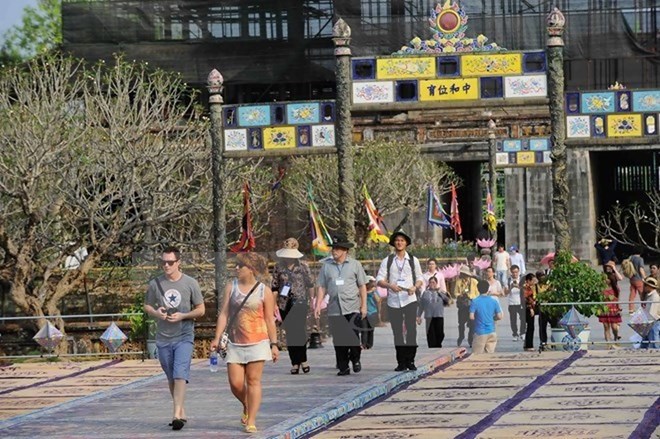



The province welcome 2.79 million arrivals during January-July.
(Photo: VNA)
During the period, the province welcomed 2.79 million arrivals, including more
than 1.15 million foreigners, up 9.35 percent and 41.02 percent respectively.
Accounting for one third of the foreign holiday-makers to Thua Thien-Hue, the
Republic of Korea topped the list of the province’s tourist sources. Meanwhile,
stable growth was seen in French, British and German markets.
According to Le Huu Minh, Vice Director of the provincial Department of
Tourism, Chan May port welcomed 96,300 foreign visitors, most of whom were from
China, Spain, Britain, the US, and Canada.
From the outset of the year, the province has organised a string of activities
like cultural festivals, art performances, and cuisine festivals to lure more
tourists to the locality.
The Hue Monuments Conservation Centre said that the "Hue-One Destination, Five
World Heritages” tour continues showing efficiency. The Complex of Hue
Monuments, royal court music, woodblocks, the imperial archives of the Nguyen
Dynasty, and poetry on Hue royal architectures have drawn great attention from
visitors.
Particularly, the art programme "Royal Inspiration” has been held at the Hue
imperial city by night since July 1. It has been carried out on the main axis
Ngo Mon-Thai Hoa-Duyet Thi Duong. After the change of guards (le doi gac) at
Ngo Mon Gate, tourists have chance to explore the splendid light arranged from
Ngo Mon to Thai Hoa Palace, then move to Duyet Thi Duong theatre to enjoy the
art performance.
Various beach tourism spots also attract a large crowd of visitors, including
Lang Co, one of the world’s most beautiful bays, which is heavily invested in
terms of urban infrastructure, and tourism services, with six tourism
complexes, and 50 hotels and hostels. The number of tourists to Lang Co bay
surges 25 percent annually on average after it was named in the list of the
Most Beautiful Bays in the World Club.
Other tourist attractions in the province are Bach Ma National Park, Thanh Toan
Bridge, garden houses of Hue, and Tam Giang lagoon.
Source: VNA